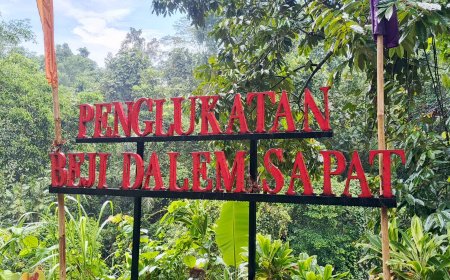Sumur Kembar Temple: Penglukatan in the Middle of the Cekik Forest
Melukat is a means of self-cleansing carried out using water media and is believed to cleanse oneself of all mala or badness. There are many melukat places in Bali. However, not all melukat places are known to many people, one of which is on the western tip of the island of Bali.
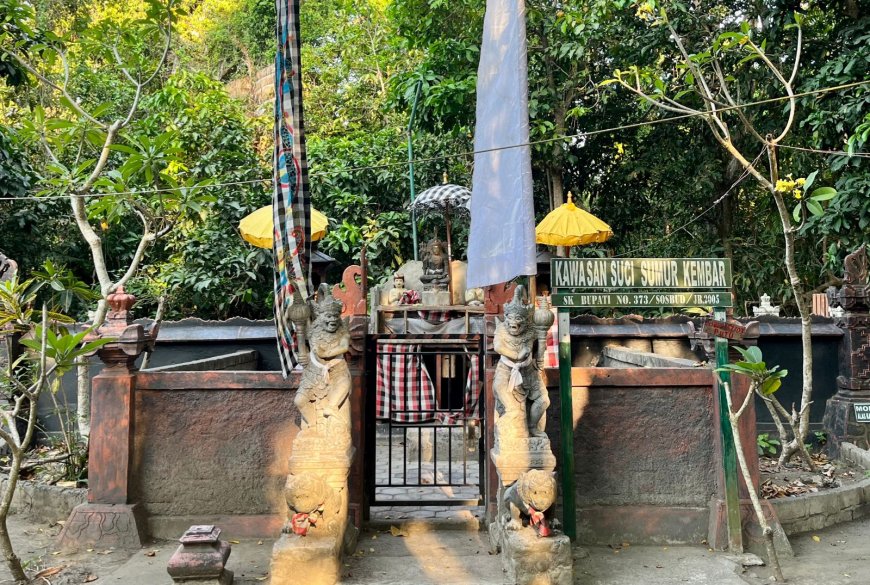
Located in the middle of the cekik forest, precisely in the Village of Gilimanuk, Melaya District, Jembrana Regency, the Sumur Kembar Temple is rarely heard of and visited by the wider community, because the distance is quite far from the city center. Although located in the middle of the forest, the access road to this temple is still quite easy to pass. From the highway, the journey to the temple only takes about 2 minutes by motorized vehicle. With a road width of about 3 meters, visitors can still enter the temple by car.
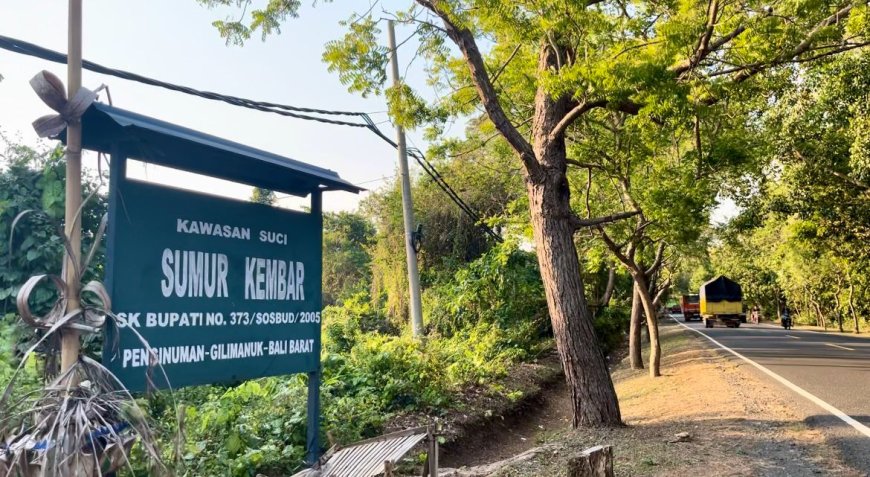
Sumur Kembar Temple (Photo Source: Author's Collection)
In this temple, there are two wells side by side, which is the basis for naming the temple Sumur Kembar. Until now no one knows when these two wells were built, but it is estimated that these wells have existed since the Dutch colonial era.
Sumur Kembar Temple is still very well preserved for its beauty. The cool air, combined with its proximity to the beach, provides a comfortable and tranquil experience for visitors. Nonetheless, first-timers may feel impressed by its mystical aura due to its remote location in the middle of the forest and away from the crowds.
In the beginning, before being converted into a sacred temple, this location only had two wells. Around this twin well area, there was originally a residential area. People's difficulty in getting water at that time prompted the construction of two wells as the main water source. Local residents rely on water from these wells for their daily needs, such as drinking, bathing, and also for their livestock. In addition, the two wells were also designed to separate bathing places between men and women, with one well intended for men and the other for women.
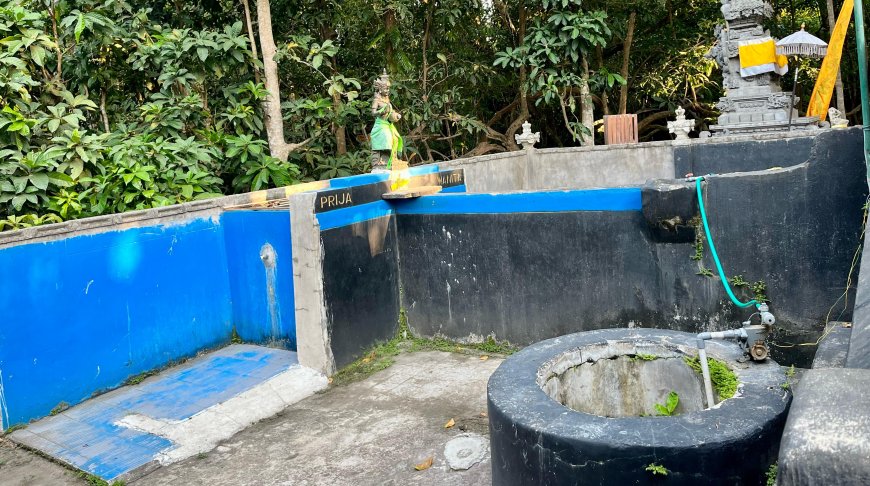
Sumur Kembar Temple (Photo Source: Author's Collection)
In this temple area, there are two types of graves, namely for Muslims and Hindus. These tombs come from local residents who used to live around this area. But at present, the tomb has been covered by shrubs because it has long been no longer used by the community.
Currently, Sumur Kembar Temple is very well maintained and clean. Like other temples in general, in this Sumur Kembar Temple there are also many pelinggih which each pelinggih has its own worship purpose. In the penglukatan place, there is a temple where the worship is addressed to Kakung Putri. Not only that, there are also Pelinggih Ratu Dalem Gede Sabda Palon, Ibu Ratu Sapu Jagat, Bunda Ratu, Ratu Ayu Roro Wilis, Ki Sentanu, and Pelinggih Prajapati.
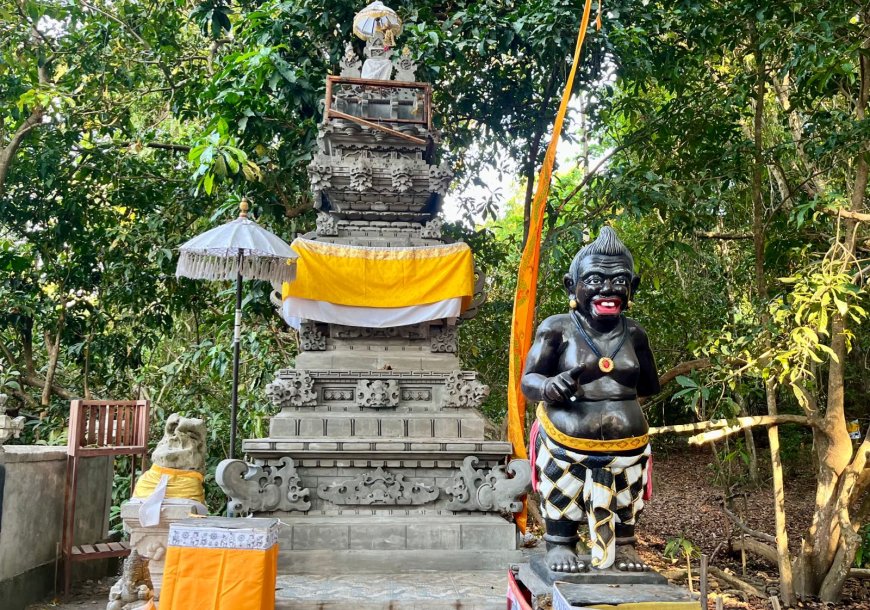
Sumur Kembar Temple (Photo Source: Author's Collection)
Penglukatan in this temple uses water media which is the source directly from the twin wells. As for what needs to be prepared if you want to do penglukatan in this temple, namely by preparing Kembang Telon which consists of white cempaka, ylang ylang, red roses, white and blue lotuses, and bungkak gadang or green coconut. For bungkak gadang is intended for one person from each pemedek.
Melukat at the Sumur Kembar Temple is also quite unique. Initially we do matur piuning or ask permission to do penglukatan first on the beach. Next, we sow flowers on the beach and clean ourselves with beach water. After the whole body is clean, then the next will do self-cleaning with pancoran water sourced from this twin well. Female devotees can use the well in the south and male devotees use the well in the north.
When all these stages have been carried out, the cleansing will continue by pouring well water that has been mixed with telon flowers. This water is applied to the head, face, gargled, then finally drunk.
After doing penglukatan, then you can continue praying to the pelinggih in the Sumur Kembar Temple. Visitors who do penglukatan here can ask for self-cleaning, mind, heart, safety, and good things that are desired during life. Some visitors who melukat to this temple also ask for a soul mate, smooth fortune, and prosperity in life.
For those who want to do melukat at the Sumur Kembar temple, there is no need to hesitate and be confused because the pengempon of the Sumur Kembar temple is always there. He is always ready to accompany pemedek who nangkil there. For those who want to do melukat, they should also ask for permission first to his intention and purpose of coming to this temple. If we have a good purpose then we will be allowed but if we have bad intentions such as looking for pesugihan and others then he will not allow us to enter the Twin Wells area.
According to the caretaker of Sumur Kembar Temple, some devotees who have been here say that they get peace while in this temple. He also confirmed this. The longer we stay in this temple, the more positive aura we will get.
Sumur Kembar Temple has an attachment to Petilesan Embah Temon, or often referred to as Penembahan Senopati Sunan Kanjeng Mataram. Devotees who wish to visit Petilesan Embah Temon are required to cleanse themselves at Sumur Kembar Temple first.
Embah Temon is an elder in Melaya who once meditated in Cekik Forest around 1954. During his meditation, Embah Temon found the Twin Wells which later became a source of water for the local community at that time.
Sumur Kembar, which has now been maintained and built into a temple with the name Pura Sumur Kembar, serves as a place of penglukatan or physical and spiritual cleansing for Hindus. Pura Sumur Kembar is a sacred place where every visitor is expected to follow the rules and not behave carelessly.
In Hinduism, melukat does not only mean physical cleansing, but also physical and mental cleansing. The goal is to cleanse the negativity within and open the aura of the self. It is not only Hindus who are allowed to visit and pray at this temple, but also many people from various religions who come to ask for blessings.




















































